- To move slides, use the arrow keys or swipe on your mobile device
- To see the speaker notes, press "s"
- To go to full screen, press "f"
- To print as PDF, go to this URL: ?print-pdf, then print.
- To get a PDF with speaker notes, add ?print-pdf&showNotes=true to the URL.
How does the ISM control star formation?
Star Formation oversimplified
Ṁ
The star formation rate, i.e., how much gas turns to stars
L / M
The light per unit mass, i.e., how stars and stellar populations turn matter into light
Star formation drives the evolution of the universe
Star formation drives the evolution of the universe
Most stars in most galaxies formed long ago
Galaxies were smaller & denser back then
The stellar initial mass function (IMF)
Stars are randomly sampled from this distribution
The stellar initial mass function (IMF)
Integral ∝ Ṁ,
Slope → M / L
Slope → M / L
High-mass stars produce light & heavy elements
low-mass stars live practically forever
Point color shows effective temperature, point size shows luminosity (left) and mass (right)
Almost all of the light in star-forming galaxies is produced by high-mass stars
The stars form in and from gas
Star Formation a little less oversimplified
Ṁ
L / M
In clusters? Evenly distributed?
High-mass Star Formation at several scales
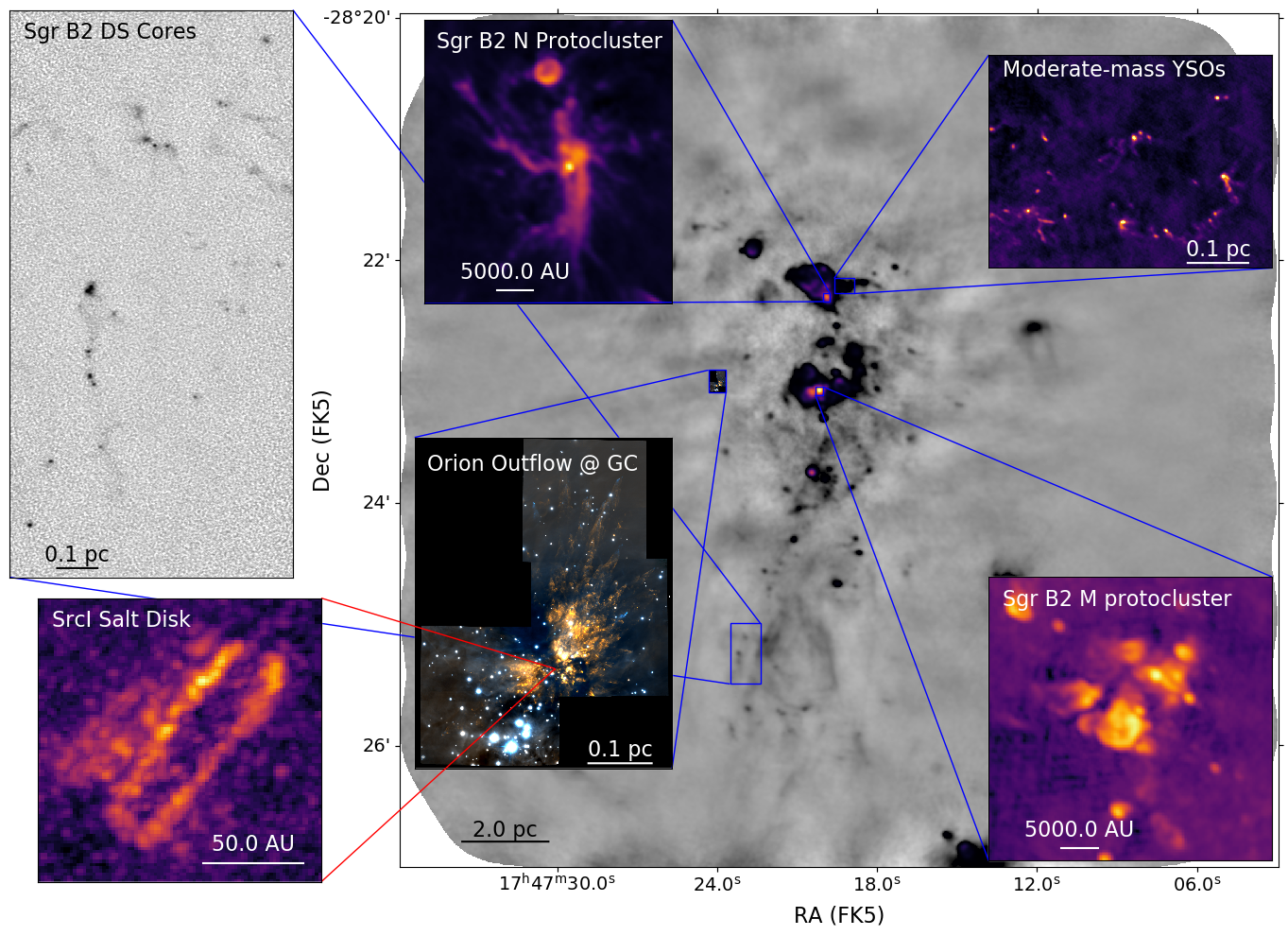
Brinary disks
The SrcI disk has gas-phase salt (NaCl, KCl) and water (H2O).
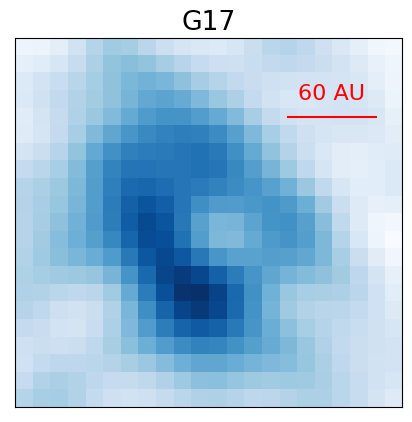
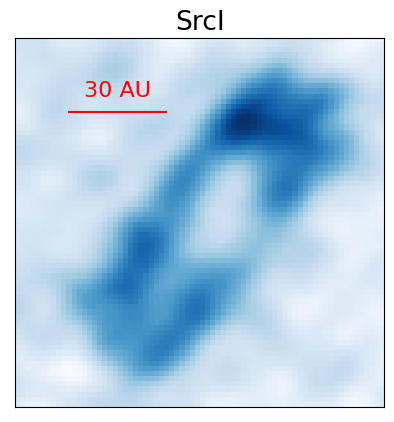
Several other sources (G17, Maud+ in prep; IRAS16547A/B; Tanaka+ 2021) also
have salt water disks.
Astro Software

|
||
|
|

|

|
I like to count
Stars are - theoretically - countable objects. Clouds are... not.

YSO disk counts in W51

YSO disk counts in Orion

YSO disk counts in Orion

YSO disk counts in Orion

YSO disk counts in Orion

YSO disk counts in Orion

YSO disk counts in Orion
YSO counts in the infrared?
The ALMA-IMF program is surveying 15 high-mass star-forming regions
PI: F. Motte, A. Ginsburg, P. Sanhueza, F. Louvet
How do the core and protostar mass functions evolve?
- Interferometric data processing (imaging)
- Source cataloging validated against simulations
- Dendrograms
- Clumpfind
- Getsources
- Parameter estimation: mass, size, temperature, etc.


Imaging


Imaging
Cataloging
Cataloging
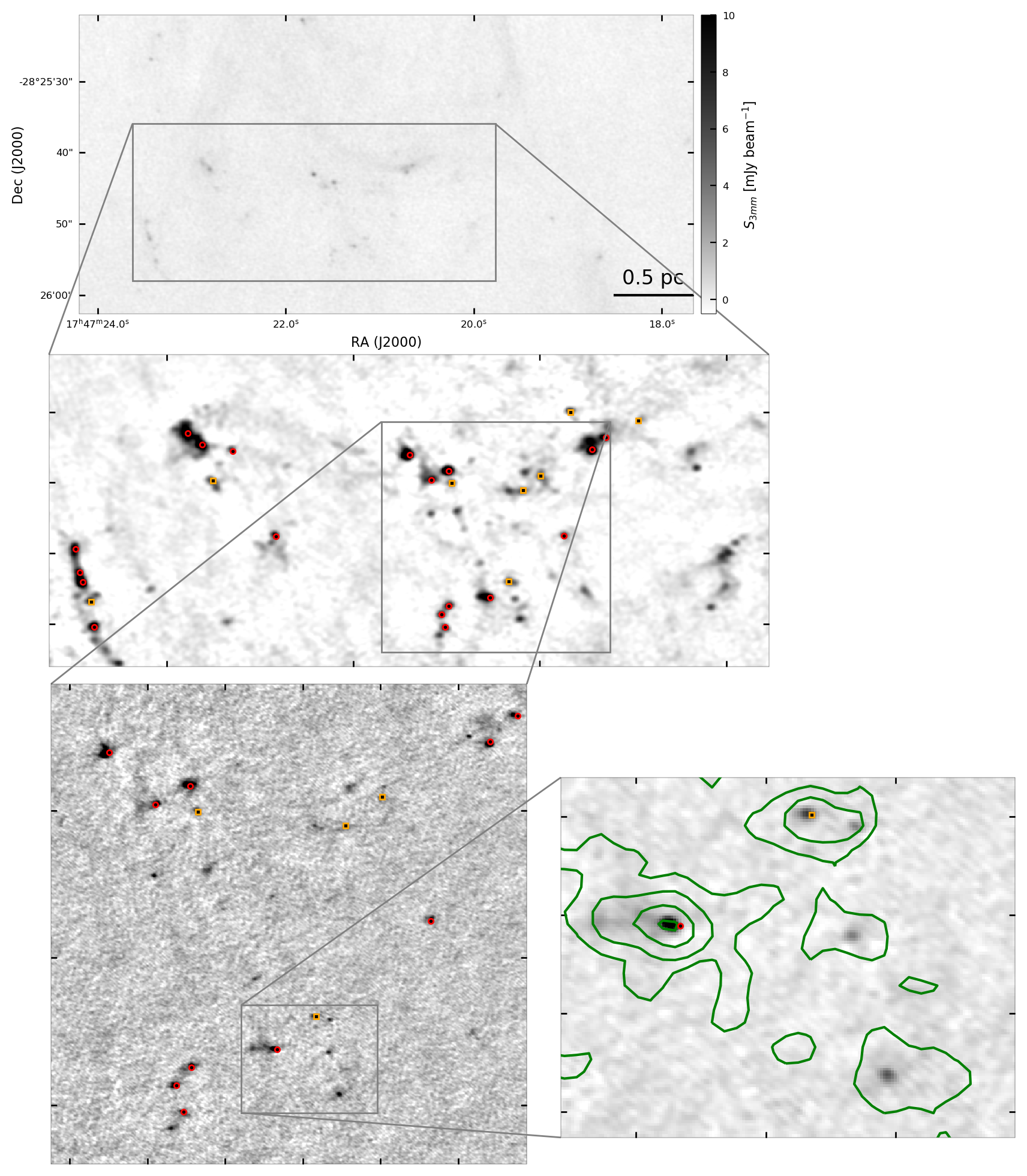
Parameter Estimation: Flux -> Mass
- Dust SED fitting
- Line Ratios
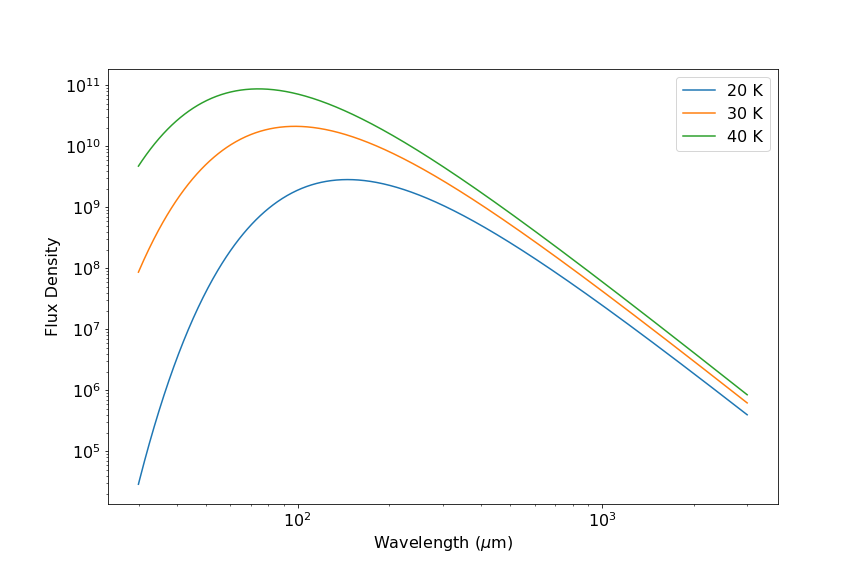
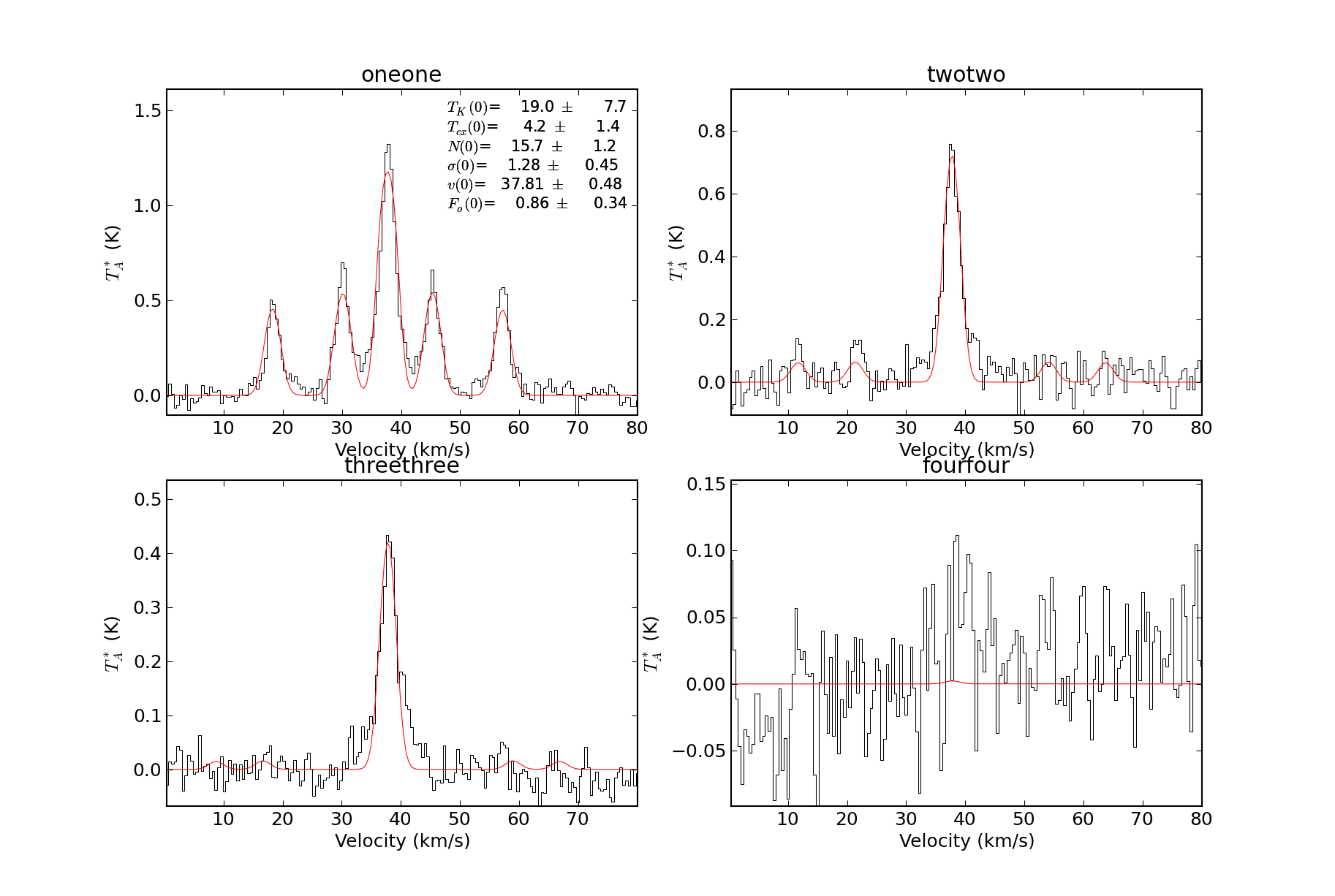
 A theoretically motivated approach to measuring the IMF
A theoretically motivated approach to measuring the IMF
- Assume an IMF and a set of mass-dependent prestellar evolutionary tracks
- Assume a start time and select a measurement time
- Use protostellar models to predict observables: S(ν), temperature, etc
- Create synthetic images by distributing protostellar models in space and "observing" them with appropriate instrument configurations
This approach is detailed more in two blog posts: http://keflavich.github.io/blog/protostellar-mass-functions.html
and http://keflavich.github.io/blog/understanding-millimeter-source-counts.html
 Protostellar Models
Protostellar Models
Model flux distribution can be directly compared to observed source flux distribution
This "forward modeling" approach is much more powerful and widely
applicable to nearly all Galactic data sets
Gas Temperature
We can measure the temperature of gas!
Temperature measurements tell us about:
- Initial conditions (Jeans Mass)
- Feedback
- Chemistry (what's frozen? what's not?)

Accreting massive young stars cook their surroundings

Accreting massive young stars cook their surroundings

Accreting massive young stars cook their surroundings

Accreting massive young stars cook their surroundings
Accreting massive young stars cook their surroundings

Feedback affects dense gas
ALMA + VLA + GBT together give multiple temperature probes on multiple scales.
High-mass protoclusters are filled with gas warmed by feedback.
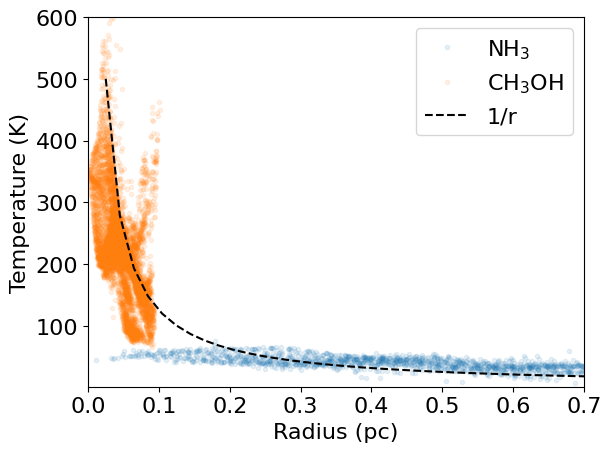
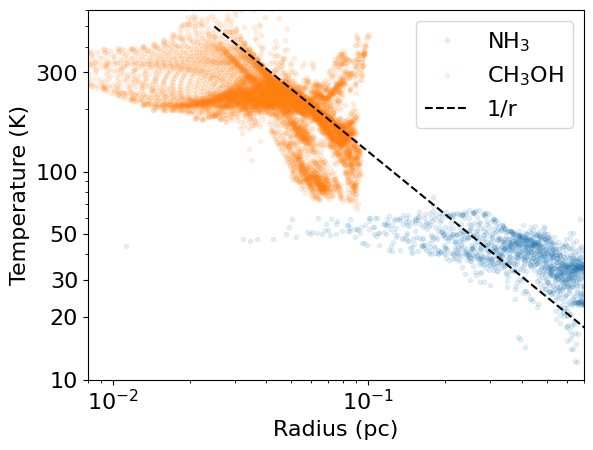
Ginsburg+ 2017, Machado+ in prep
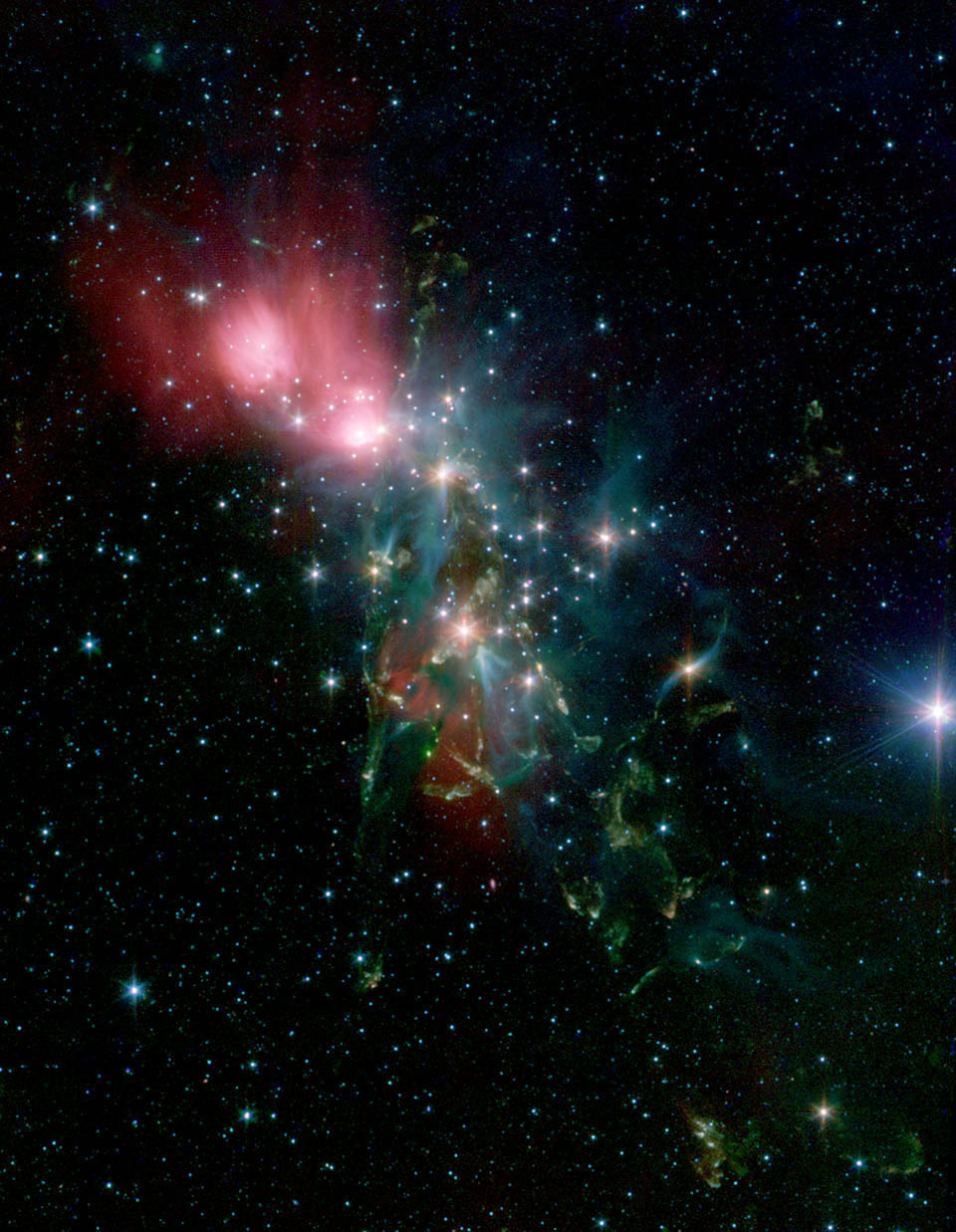
Most stars form in dense regions
NGC 1333, an embedded low-mass cluster
Lada & Lada 2003: >70% in embedded clusters
Back in time, more stars formed in higher-density regions like this
NGC 3603 is a high-mass (104 M⊙) cluster
Lada & Lada 2003:
5-10% in bound clusters
in our Galaxy
5-10% in bound clusters
in our Galaxy
Our own Galaxy's center, the CMZ, has denser gas than the Galactic average
Cold Dust
Hot, ionized gas
Hot dust/PAHs
Hot, ionized gas
Hot dust/PAHs
Our own Galaxy's center, the CMZ, has denser gas than the Galactic average
Our own Galaxy's center, the CMZ, has denser gas than the Galactic average
In denser (parts of) galaxies, more stars form in clusters
Γ is the fraction of stars forming in bound clusters
Galaxy averages
"Bound Cluster Fraction" is predicted higher the CMZ
Γ is the fraction of stars forming in bound clusters
Galaxy averages
CMZ prediction
The "Bound Cluster Fraction" is higher in the CMZ
Γ is the fraction of stars forming in bound clusters
Galaxy averages
CMZ prediction
Sgr B2 data
Sgr B2 data
Top-heavier mass functions in high-mass clusters

Salts in Orion
Orion Source I
a disk around a 15 M⊙ YSO
Salt: NaCl
We can use salts to measure HMYSO masses
- NaCl, KCl are only in the disk, not the outflow (water traces both)
- NaCl is detected in at least one other HMYSO (Maud, Ginsburg+ in prep)
- Salts are observable with ALMA, the JVLA, and the future ngVLA
- Future projects will involve observing and modeling salt disks to measure HMYSO masses
Observing the Keplerian rotation profile of a disk is the most direct way to measure a protostar's mass
(we can only see the disk, not the star itself)
Temperature?
Temperature?
A contrived model

 Full spectral survey of a line-of-sight in the Galactic Center
Full spectral survey of a line-of-sight in the Galactic Center
Turbulence
We still don't understand turbulence, but there are many useful ways to measure
our ignorance.

Measuring Line Profiles
SCOUSE uses pyspeckit for manual fits. Gausspy+ is machine-learning trained. We're exploring more automated approaches.Unique Masers
There are several peculiar (rare) maser classes that are interesting to explore, as they may reveal details about the underlying sources.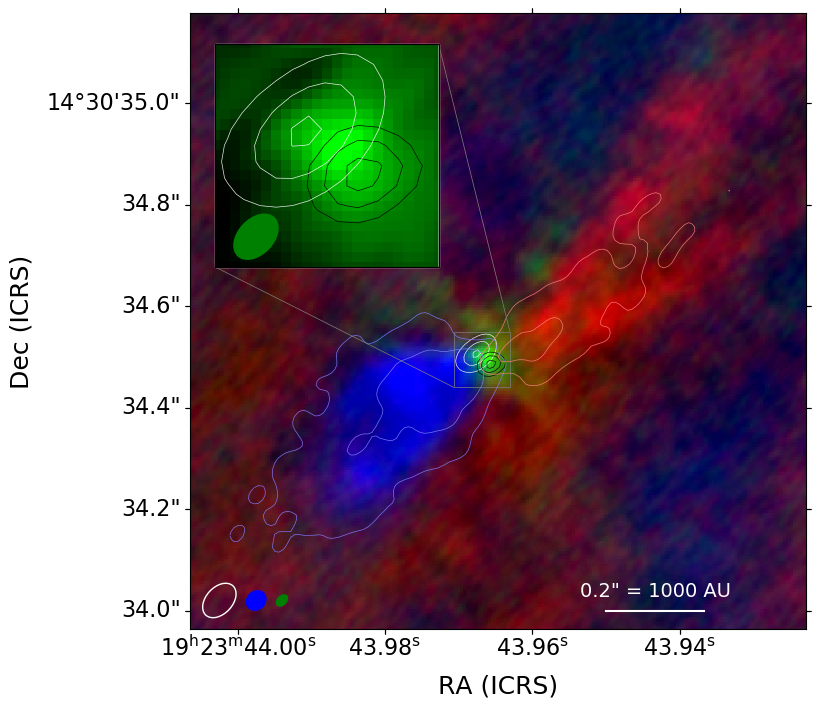

Sgr B2 Masers
Sgr B2 contains many masers, including water, SiO, and methanol.
We're searching for weird ones and mapping the distribution of common ones.

Ammonia Masers


PASHION: Paschen Alpha survey of the Galaxy
PASHION: Paschen Alpha survey of the Galaxy

Paschen Alpha background modeling
There are many undetected fore/background stars per pixel

PASHION: Search for recombination-line-emitting, accreting YSOs
Other projects
I have other projects that are observationally motivated, but are either more narrow or do not fit the overarching plan described earlierThe MUSTANG Galactic Plane Survey (MGPS90)
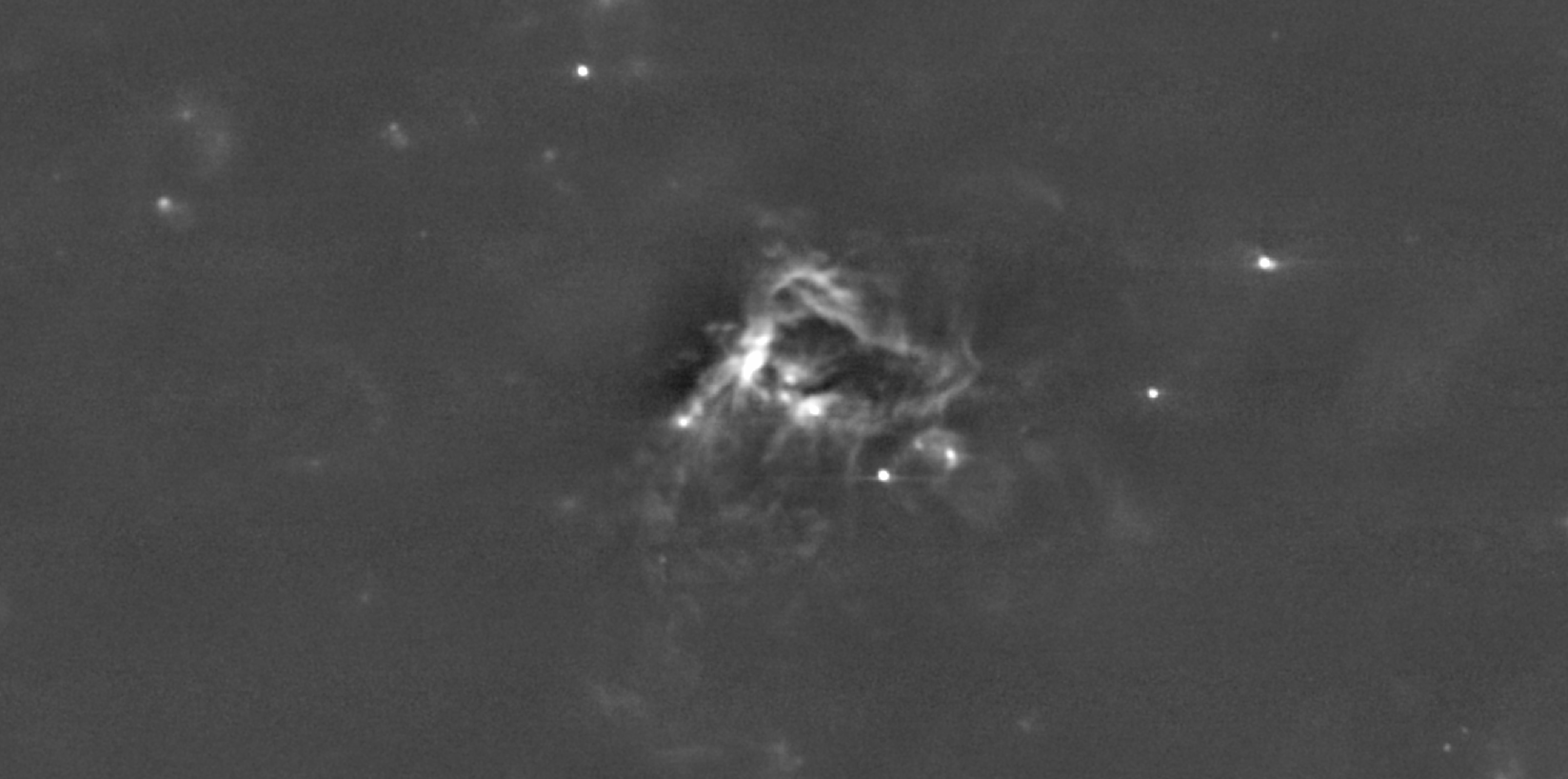 Goal: Complete a Galactic plane survey at 10" resolution at 90 GHz (3
mm)
Goal: Complete a Galactic plane survey at 10" resolution at 90 GHz (3
mm)
Cartoon of low-mass star formation
A molecular cloud fragments
The core forms a central protostar
The protostar heats its parent core and forms a disk
It drives an outflow and consumes or blows out its core
Eventually, you end with just a star-disk system
Cartoon of low-mass star formation
How is star formation in high-mass clusters different?
- Feedback from one star affects many in clustered regions
- IMF depends on density, feedback, global conditions (e.g., Jones & Bate 2018, Narayanan & Dave 2012)
- Total star formation efficiency is higher.
- Collisions assemble the most massive stars?
(e.g., Fujii+ & PZ 2013, but see Moeckel & Clarke 2011)
Cartoon of high- and low-mass star formation
Main difference: massive stars affect their surroundings
Classic HII region feedback:
O-stars clear out their environment
Accreting massive young stars affect their environment
Accreting massive young stars affect their environment
The characteristic fragmentation scale
The Jeans Mass MJ is the mass where gravity and thermal pressure are balanced.
MJ ∝ T3/2 ρ−1/2
The characteristic fragmentation scale is larger
Jeans Mass
MJ ∝ T3/2 ρ−1/2
The cartoon in the context of HMSF
These high mass cores suppress low-mass star formation (LMSF) in their vicinity.
They reduce or prevent LMSF in the cores of stellar clusters.
More extreme: 'cooperative accretion'
With enough high-mass stars forming concurrently, massive stars may prevent fragmentation entirely.
If they still have enough gravity to bind the gas, the remaining gas is forced onto the most massive gravitational sinks.
If they still have enough gravity to bind the gas, the remaining gas is forced onto the most massive gravitational sinks.
Large scales again:
What governs the star formation rate?
Turbulent ISM models
Turbulent ISM models
Turbulent ISM models
Local cloud studies support the idea of a gas density threshold for star formation
Thresholds are used in simulations to say
"if gas reaches this density, turn it into stars"
"if gas reaches this density, turn it into stars"
The California molecular cloud with protostars
ALMA enables protostar counting in
distant, massive clouds
Sgr B2: the most massive & star-forming cloud in the Galaxy
Is there a threshold?
Is there a threshold?
A threshold separates Sgr B2 from The Brick
Summary of SF Thresholds & Star Counts
- If star formation occurs above density thresholds, they are not universal.
- Clouds within the CMZ appear to have a higher and consistent threshold, so an environmentally-dependent threshold is plausible.
- We can rule out subclasses of turbulent theories and measure their defining parameters
- (proto)Star-counting measurements of star formation are now possible throughout the Galaxy.
Possible future uses for these lines?
- Metallicity measurement in deeply embedded star-forming environments? (at least of Na, K, Cl)
- Disk kinematics of high-mass stars, which are otherwise unobservable (τ>1 at mm wavelengths)
- Disk kinematic measurements at early stages?
- Probe dust destruction (and/or formation?) in outflows, disks?
- Probe radiation environment around HMYSOs?
Why do we see salt?
- Previously, NaCl & KCl only in AGB* atmospheres,
associated with dust formation - Most likely dust destruction here
Dust destruction happens immediately as the outflow is launched? - What about excitation? We see vibrationally excited lines, which are not seen in AGB*s
We do not have a viable model to explain these temperatures
A strong non-blackbody radiation field from 25-40 µm may explain them.
Forsterite (MgSiO4) has some emission bands in that range. Maybe?
Most of what we know of star formation in detail comes from small local clouds
Most of what we know of star formation in detail comes from small local clouds
Most of what we know of star formation in detail comes from small local clouds
They contain only low-mass stars and do not represent star formation in general
Summary so far:
- At higher gas density, more stars form in bound clusters
- Galaxies were denser in the past
- Most stars formed when galaxies were denser
- Most stars formed in or near high-mass clusters, in regions unlike the "local neighborhood"
Summary
Stars form differently in high-density environments
The local neighborhood is not representative
- More stars form in clusters
- More stars are affected by feedback from neighbors
The local neighborhood is not representative
- ALMA enables detailed study of distant regions (Sgr B2, W51, W43 so far)
- ALMA-IMF will expand the sample to match or exceed local clouds